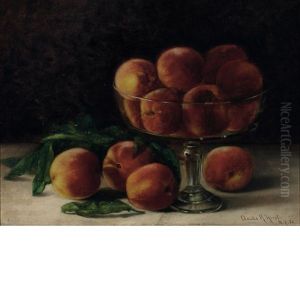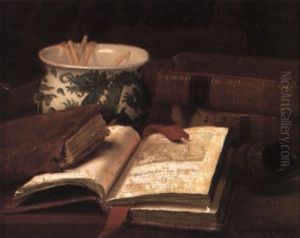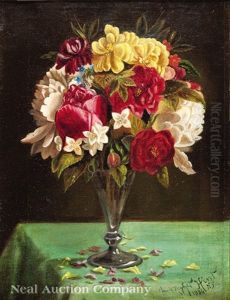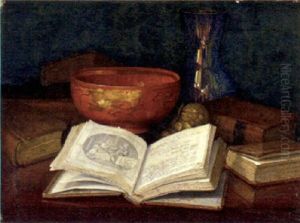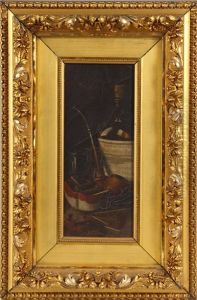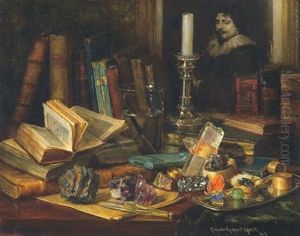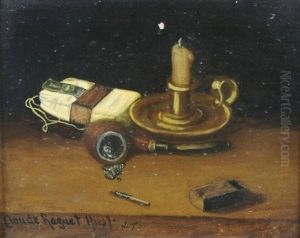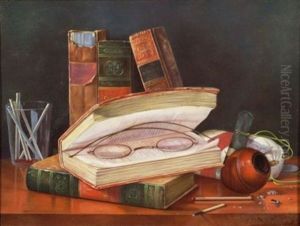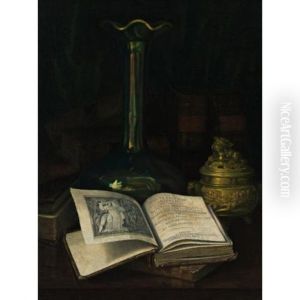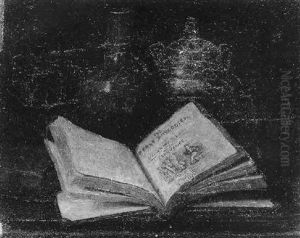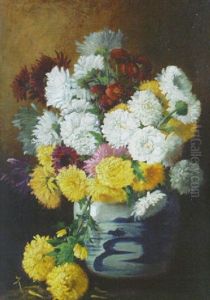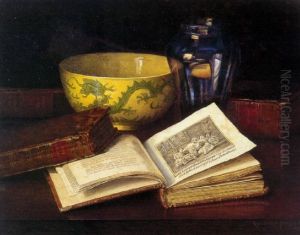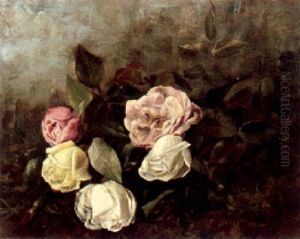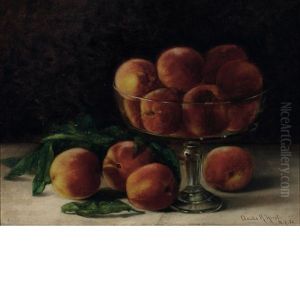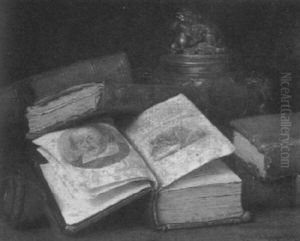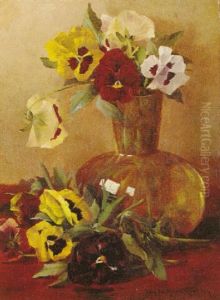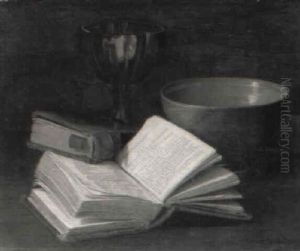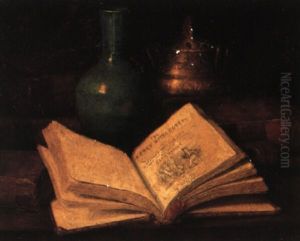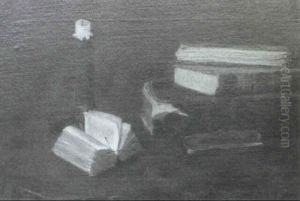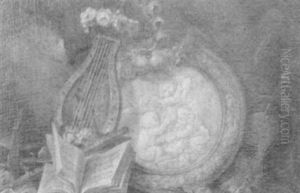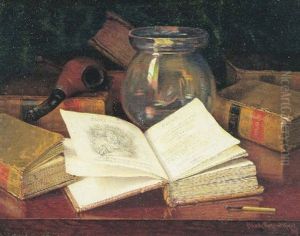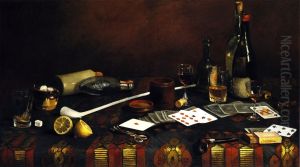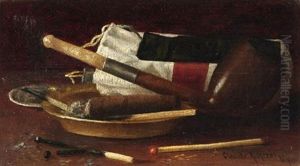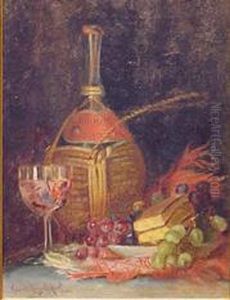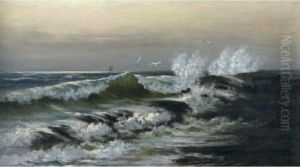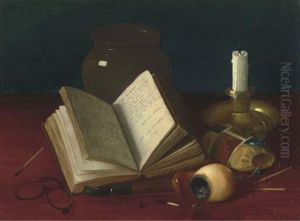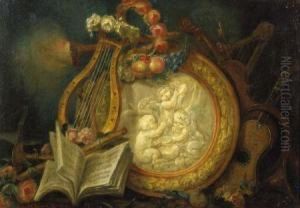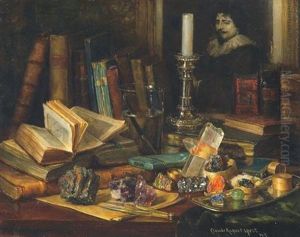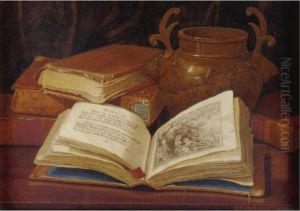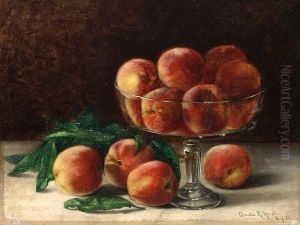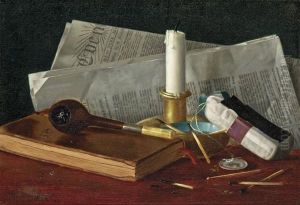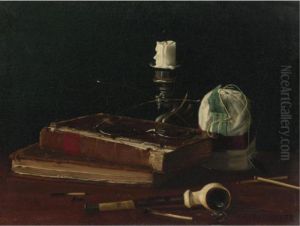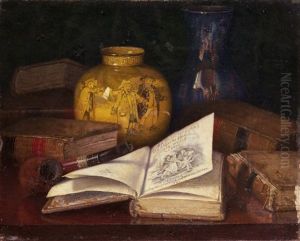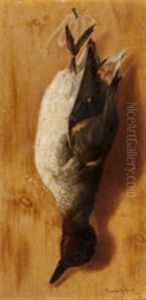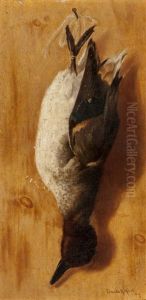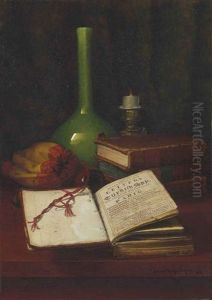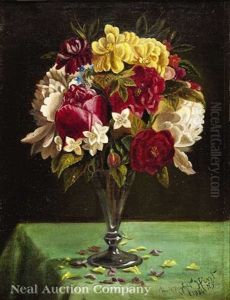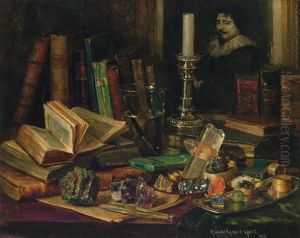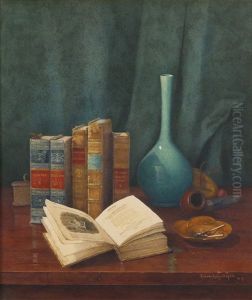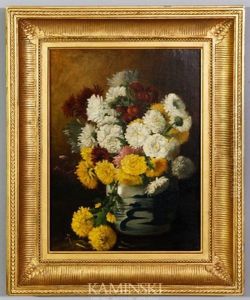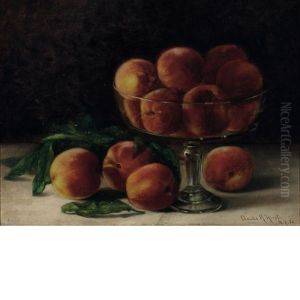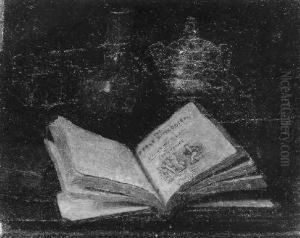Claude Raguet Hirst Paintings
Claude Raguet Hirst was an American painter, born in Cincinnati, Ohio, in 1855. She was a pioneering figure in the trompe-l'oeil (deceive the eye) genre of still life painting, distinguishing herself in a field that was predominantly male during the late 19th and early 20th centuries. Hirst's meticulous attention to detail and her ability to create hyper-realistic depictions of everyday objects such as books, tobacco pipes, and newspapers garnered her significant recognition.
Initially, Hirst pursued literature and music before turning to painting. She studied at the Art Students League in New York and later under the guidance of Thomas Eakins, a prominent American realist painter. Despite the challenges faced by women in the arts during her time, Hirst carved out a successful career. She was particularly admired for her nuanced treatment of domestic and everyday scenes, which she imbued with a sense of dignity and importance, challenging the viewer to reconsider the value of common objects.
Hirst exhibited her work at major venues, including the Pennsylvania Academy of the Fine Arts, the National Academy of Design, and the Art Institute of Chicago. Her paintings were celebrated for their technical precision and the depth of their aesthetic appeal. She often included references to literature and intellectual pursuits in her compositions, subtly advocating for the value of education and intellectualism, especially for women.
Throughout her career, Hirst remained committed to the trompe-l'oeil style, contributing significantly to its popularity and development in the United States. Her work not only reflects the meticulous craftsmanship of the genre but also serves as a commentary on the social and cultural values of her time.
Claude Raguet Hirst passed away in 1942, leaving behind a legacy that has continued to influence artists and collectors. Her contributions to American art and the trompe-l'oeil genre have been reassessed and celebrated in recent years, highlighting her role as a pioneering woman artist who overcame the era's gender barriers to achieve lasting recognition.
